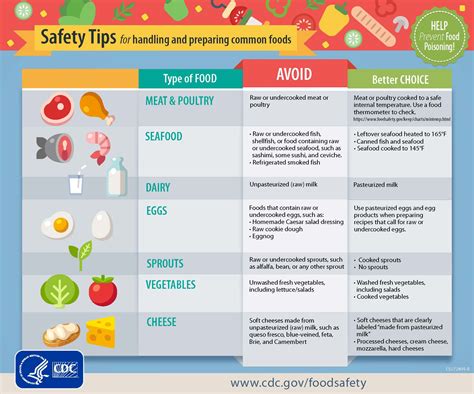
Shedding stubborn middle-age belly fat can be achieved through a combination of strategic lifestyle adjustments, according to a personal trainer who outlined 19 actionable tips ranging from dietary changes to exercise modifications and stress management techniques.
For many, the accumulation of abdominal fat becomes a growing concern as they age, often linked to hormonal shifts, decreased muscle mass, and lifestyle factors. Addressing this requires a multifaceted approach, according to the expert. These 19 recommendations aim to provide a comprehensive guide to tackling this common issue.
Dietary Adjustments for Belly Fat Loss
One of the primary areas of focus is diet. The trainer emphasizes the importance of several key dietary changes, starting with increasing protein intake. “Protein is crucial for building and preserving muscle mass, which helps boost metabolism and burn more calories, even at rest,” the trainer stated. High-protein foods include lean meats, poultry, fish, eggs, and legumes. Aiming for protein at every meal helps in satiety and controlling hunger cravings.
Another key tip revolves around reducing added sugar consumption. Sugary drinks, processed foods, and excessive sweets contribute significantly to calorie intake and can lead to increased belly fat storage. The trainer suggests reading food labels carefully and opting for naturally sweet alternatives like fruits in moderation. Eliminating or significantly reducing sugary beverages is a critical step.
Increasing fiber intake is another vital recommendation. Fiber-rich foods, such as fruits, vegetables, whole grains, and legumes, promote feelings of fullness, aid digestion, and help regulate blood sugar levels. Soluble fiber, in particular, has been shown to reduce belly fat. Aiming for at least 25-30 grams of fiber per day is recommended.
Healthy fats are also essential, despite the common misconception that all fats are detrimental. The trainer advises incorporating sources of monounsaturated and polyunsaturated fats, such as avocados, nuts, seeds, olive oil, and fatty fish. These fats support overall health and can help reduce inflammation, which is often associated with increased belly fat. Portion control is key, as fats are calorie-dense.
Hydration plays a crucial role in overall health and weight management. Drinking plenty of water throughout the day can help boost metabolism, reduce appetite, and promote fat loss. The trainer suggests aiming for at least eight glasses of water per day and avoiding sugary drinks. Water is especially important before meals to promote satiety.
Probiotic-rich foods can also contribute to a healthier gut microbiome, which has been linked to reduced belly fat. Foods like yogurt, kefir, sauerkraut, and kimchi contain beneficial bacteria that can improve digestion and reduce inflammation.
Mindful eating is another important dietary adjustment. Paying attention to hunger and fullness cues, eating slowly, and avoiding distractions can help prevent overeating and promote better digestion. The trainer suggests practicing mindful eating techniques, such as putting down your fork between bites and savoring each mouthful.
Exercise Strategies for Targeting Belly Fat
In addition to dietary changes, the trainer emphasizes the importance of incorporating specific exercise strategies to target belly fat. A combination of cardiovascular exercise and strength training is recommended for optimal results.
Cardiovascular exercise, such as running, cycling, swimming, or brisk walking, helps burn calories and reduce overall body fat. The trainer advises aiming for at least 150 minutes of moderate-intensity or 75 minutes of vigorous-intensity cardio per week. High-Intensity Interval Training (HIIT) can also be effective for burning calories in a shorter amount of time.
Strength training is crucial for building muscle mass, which helps boost metabolism and burn more calories, even at rest. The trainer suggests incorporating strength training exercises that target all major muscle groups, including the core. Exercises like squats, lunges, push-ups, and planks are highly effective. Aiming for at least two to three strength training sessions per week is recommended.
Core-strengthening exercises, such as planks, crunches, and Russian twists, can help tone the abdominal muscles and improve posture. While these exercises alone won’t eliminate belly fat, they can contribute to a more defined midsection. The trainer emphasizes the importance of proper form to avoid injury.
Increasing daily activity levels is also crucial. Simple changes like taking the stairs instead of the elevator, walking during lunch breaks, or standing while working can help burn extra calories throughout the day. The trainer suggests aiming for at least 10,000 steps per day.
Lifestyle Modifications for Reducing Belly Fat
Beyond diet and exercise, the trainer highlights the importance of lifestyle modifications for reducing belly fat. Stress management, sleep hygiene, and regular monitoring are key components of a successful weight loss strategy.
Stress management is crucial, as chronic stress can lead to increased cortisol levels, which can promote belly fat storage. The trainer suggests practicing stress-reducing activities such as yoga, meditation, deep breathing exercises, or spending time in nature. Finding healthy coping mechanisms for stress is essential.
Adequate sleep is also essential for weight management. Lack of sleep can disrupt hormones that regulate appetite and metabolism, leading to increased cravings and weight gain. The trainer advises aiming for at least seven to eight hours of quality sleep per night. Establishing a consistent sleep schedule and creating a relaxing bedtime routine can improve sleep quality.
Tracking progress and making adjustments as needed is another important aspect of the strategy. The trainer suggests monitoring weight, waist circumference, and body fat percentage on a regular basis. Keeping a food journal and tracking exercise can also help identify areas for improvement. Regular check-ins with a healthcare professional or registered dietitian can provide personalized guidance and support.
Avoiding processed foods and trans fats is also an important lifestyle modification. Processed foods are often high in calories, sugar, and unhealthy fats, while trans fats have been linked to increased belly fat. The trainer suggests opting for whole, unprocessed foods whenever possible. Reading food labels carefully and avoiding products that contain trans fats is recommended.
Limiting alcohol consumption can also help reduce belly fat. Alcohol is high in calories and can interfere with fat metabolism. The trainer suggests limiting alcohol intake to one drink per day for women and two drinks per day for men. Choosing lower-calorie alcoholic beverages and drinking plenty of water can also help mitigate the negative effects of alcohol.
Addressing underlying health conditions is also important. Certain medical conditions, such as hypothyroidism and polycystic ovary syndrome (PCOS), can contribute to weight gain and belly fat accumulation. The trainer suggests consulting with a healthcare professional to rule out any underlying health conditions and receive appropriate treatment.
Staying consistent with these lifestyle changes is crucial for long-term success. The trainer emphasizes that there is no quick fix for belly fat and that it takes time and effort to see results. Setting realistic goals, celebrating small victories, and seeking support from friends, family, or a healthcare professional can help maintain motivation and stay on track.
Additional Considerations for Middle-Age Belly Fat
The trainer also notes that hormonal changes associated with middle age, such as menopause in women and declining testosterone levels in men, can contribute to belly fat accumulation. While these changes are natural, they can make it more challenging to lose weight.
For women experiencing menopause, hormone replacement therapy (HRT) may be an option to help manage hormonal imbalances and reduce belly fat. However, HRT is not without risks and should be discussed with a healthcare professional.
For men experiencing declining testosterone levels, testosterone replacement therapy (TRT) may be an option to help boost muscle mass and reduce belly fat. However, TRT also carries risks and should be discussed with a healthcare professional.
The trainer also emphasizes the importance of patience and self-compassion. Losing belly fat can be a challenging process, and it’s important to be kind to yourself and avoid getting discouraged by setbacks. Focusing on making sustainable lifestyle changes and celebrating progress along the way can help maintain motivation and achieve long-term success.
The trainer reiterates that these tips are general guidelines and that individual results may vary. Consulting with a healthcare professional or registered dietitian is recommended to develop a personalized plan that meets individual needs and goals. They can provide tailored advice on diet, exercise, and lifestyle modifications based on individual health status and preferences.
The comprehensive approach to banishing middle-age belly fat underscores the importance of integrating dietary changes, exercise strategies, and lifestyle modifications for sustainable results. By focusing on these 19 tips, individuals can take control of their health and achieve a leaner, healthier midsection.
Quotes from the source:
- “Protein is crucial for building and preserving muscle mass, which helps boost metabolism and burn more calories, even at rest.”
- (Implied quote based on information provided) Aim for at least 150 minutes of moderate-intensity or 75 minutes of vigorous-intensity cardio per week.
Frequently Asked Questions (FAQ):
Q1: What are the primary causes of middle-age belly fat?
A: Middle-age belly fat is primarily caused by a combination of factors including hormonal changes (such as menopause in women and declining testosterone in men), decreased muscle mass, reduced physical activity, increased stress levels, and dietary habits. Hormonal shifts can alter fat distribution, favoring abdominal fat storage. Decreased muscle mass lowers metabolic rate, making it easier to gain weight. Stress leads to increased cortisol levels, which promotes fat accumulation in the abdominal area. Poor dietary choices, such as high intake of sugary and processed foods, also contribute significantly.
Q2: How does increasing protein intake help reduce belly fat?
A: Increasing protein intake helps reduce belly fat through several mechanisms. Protein is highly satiating, meaning it promotes feelings of fullness and reduces appetite, which can lead to lower overall calorie consumption. Protein also has a higher thermic effect than carbohydrates or fats, meaning the body burns more calories digesting it. Additionally, protein is essential for building and preserving muscle mass. Increased muscle mass boosts metabolism, allowing the body to burn more calories even at rest, which can help reduce overall body fat, including belly fat.
Q3: What types of exercises are most effective for targeting belly fat?
A: The most effective exercises for targeting belly fat involve a combination of cardiovascular exercise and strength training. Cardiovascular exercises like running, cycling, swimming, and brisk walking help burn calories and reduce overall body fat. High-Intensity Interval Training (HIIT) can also be particularly effective. Strength training exercises, such as squats, lunges, push-ups, and planks, help build muscle mass, which boosts metabolism and burns more calories. Core-strengthening exercises, such as planks and crunches, can help tone the abdominal muscles, although they won’t directly eliminate belly fat.
Q4: How does stress management contribute to reducing belly fat?
A: Stress management is crucial for reducing belly fat because chronic stress leads to increased cortisol levels. Cortisol is a stress hormone that promotes the storage of fat in the abdominal area. By practicing stress-reducing activities such as yoga, meditation, deep breathing exercises, or spending time in nature, individuals can lower their cortisol levels and reduce the accumulation of belly fat. Finding healthy coping mechanisms for stress, rather than relying on unhealthy habits like overeating or consuming sugary foods, is essential for long-term success.
Q5: What role does sleep play in managing belly fat?
A: Adequate sleep is essential for managing belly fat because lack of sleep can disrupt hormones that regulate appetite and metabolism. Sleep deprivation can increase levels of ghrelin, a hormone that stimulates appetite, and decrease levels of leptin, a hormone that promotes feelings of fullness. This hormonal imbalance can lead to increased cravings and overeating, contributing to weight gain and belly fat accumulation. Aiming for at least seven to eight hours of quality sleep per night can help regulate these hormones and support weight management efforts.









